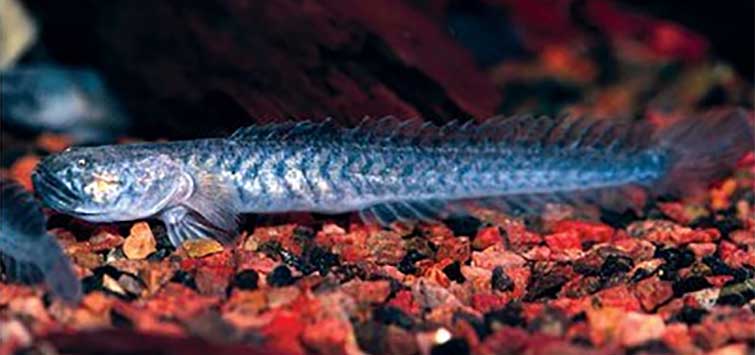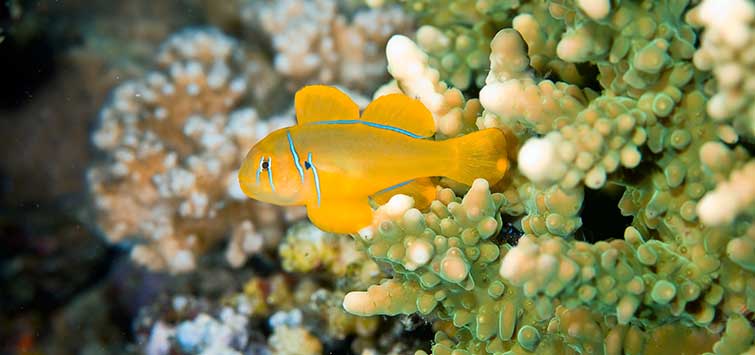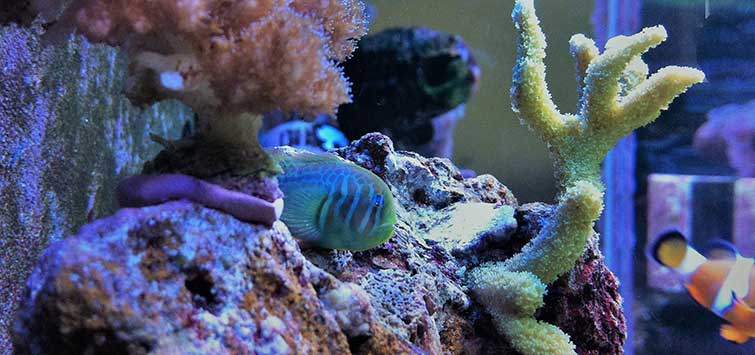Gobioides broussonnetii
Common Names: Violet goby, dragon goby, dragon fish
Type Locality: None stated
Range: South Carolina to Florida, along the Gulf of Mexico coasts of Alabama, Mississippi, Louisiana, and Texas; along the Caribbean coast of Colombia, eastward to Venezuela, Surinam, Guyana, French Guiana, and Brazil.
Taxonomic Troubles: This is the original description. The species name is often misspelled as broussonneti
Size: 60 cm (24 inches) TL
Preferred Water Chemistry: Tropical freshwater, brackish, marine; a specific gravity of 1.008 is good. As its distribution suggests, it can handle cooler temperatures better than can equatorial tropicals.
Difficulty: Hardy if it needs are met, but this is not a fish for the average aquarium.
Tank Setup: A 2-foot fish needs a big tank, even if it is very thin and serpentine 2-foot fish. Include hiding spots, either rock caves or plastic pipe sections--alternatively, a soft substrate in which the fish can burrow. This fish lives naturally in mud bottoms.
Feeding: Not too easy to feed, but not because it's particularly fussy. A sand sifter and filter feeder by nature, it requires small foods. Some aquarists report success with pellets; others with live or frozen blackworms and bloodworms.
Breeding: No aquarium spawnings are reported.
Fish Description
Very thin and eel-like, with dorsal and anal fins joined with the caudal. Extremely small eyes. This is the largest goby in the Caribbean. Overall, coloration is violet-grey.
Notes
A lot of these are sold because of their odd appearance and common names. Who wouldn't want a purple dragon? But that is insufficient reason to buy a fish, and a lot of these animals are kept inadequately, as is the case with most brackish species. Their natural habitat is the mouths of rivers, in muddy bays and estuaries. They can be found upstream in fresh water, but they d not live their lives there, and they fare poorly in a freshwater aquarium. They can, however, be acclimated to full marine salinity.
Despite its fierce appearance, this is not an aggressive fish, and even very small fish are generally safe with it. Reports as to its sociability are conflicting with some claiming it is territorial and should be kept one to a tank, and others finding they get along very well with conspecifics. This may be related to size differences, as many fishes that school when juveniles become territorial loners as they mature.
You need to be dedicated to keep this goby, since it grows very big, it isn't particularly nice to look at, it's not very active, and it prefers to hide most of the time. On the other hand, it is unusal, and it is hardy and long-lived if kept properly. Its feeding behavior is very interesting, and its slower, bottom-hugging manner is a nice contrast to frenetic schooling routines.
Displaying the fish requires a compromise between the needs of the animal and the aquarist's desire to observe it. Mimicking its natural habitat would make the tank a muddy mess. Using soft sand will enable the fish to burrow and still leave the water fairly clear. THe time-honored trick of setting up hiding caves that are easily viewed through the glass also works well. A challenging but fascinating paludarium setup could include mudskippers Periophthalmus sp. The violet gobies could feed onthe bottom underwater while the other gobies hunted goodies on diftwood at and above the water surface. All in all, this is an interesting oddball for a brackish tank.

.png?h=595&iar=0&w=2781&hash=5FD5E69473BCC22199FBFA2FB71B6033)



